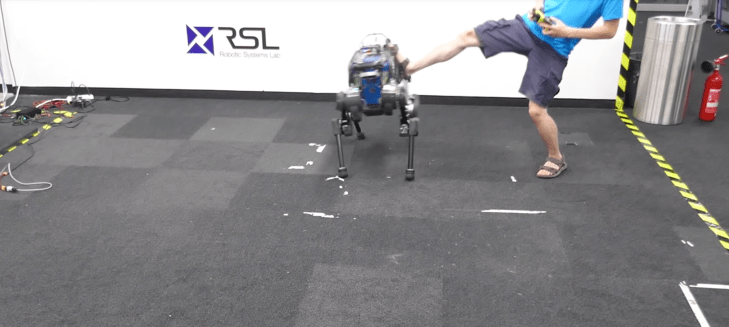Advanced robots are expensive, and teaching them can be incredibly time-consuming. With the proper simulation, however, roboticists can train their machines to learn quickly. A team from the Robotic Systems Lab in Zurich, Switzerland have demonstrated as much in a new paper.
The research outlines how training a neural network using simulation taught the Boston Dynamics-esque ANYmal robot how to perform some impressive feats, including the ability to roll over, as a method for recovering from a fall.
Using the simulation, researchers were able to train more than 2,000 computerized versions of the quadrupedal robot simultaneously in real time. Doing so made it possible for researchers to examine different methods in order to determine the best way to execute certain tasks.
Once collected, those learnings can then be transferred to the robot. As Popular Science notes, this is all similar to the ways in which many companies test and refine self-driving systems.

“Using policies trained in simulation,” the team writes in the paper, “the quadrupedal machine achieves locomotion skills that go beyond what had been achieved with prior methods: ANYmal is capable of precisely and energy-efficiently following high-level body velocity commands, running faster than before, and recovering from falling even in complex configurations.”
